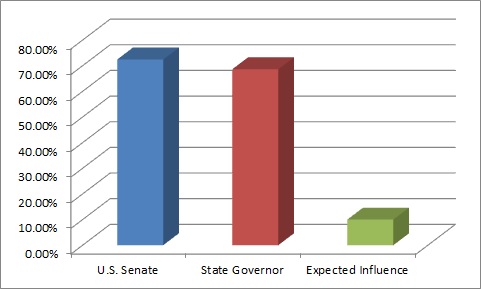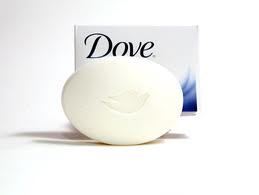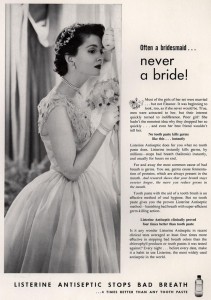Everyone needs to influence someone. Salespeople, business executives, financial professionals, attorneys, political leaders and parents must sway the opinions of others to succeed in their roles. And while most concentrate on honing their message and delivery techniques to succeed, research reveals that another factor can play a big role. Surprisingly, it’s your appearance – especially your face.
Why is appearance so important? Science has uncovered three underlying reasons:
- Loss Aversion: We automatically look for good opportunities and try to avoid people and things that could cause us problems.
- Our minds quickly size up and form first impressions of people we meet.
- First impressions last.
 When most meet others for the first time, their minds automatically try to assess them to determine:
When most meet others for the first time, their minds automatically try to assess them to determine:
- Is this a friend or foe?
- Do I like this person?
- Can I trust this individual – are they ethical and competent to help me?
Think about it: When you first meet a doctor, attorney, financial professional, salesperson or repairman, don’t you look for clues as to whether you can rely on them to do the job right?
 Substantial research has found that in this quick search for clues, appearance – especially facial appearance – has a lot to do with whether we will believe and trust people. Most don’t realize they’ve been influenced by this unconscious process.
Substantial research has found that in this quick search for clues, appearance – especially facial appearance – has a lot to do with whether we will believe and trust people. Most don’t realize they’ve been influenced by this unconscious process.
Repeated studies have also proved the truth of the saying: First impressions last. Perhaps because most always want to feel that they’re right, what psychologists call confirmation bias takes hold. It causes your potential clients to tenaciously hold onto their first impression of you, unless you provide overwhelming evidence that they misjudged you. You may never get the chance.
Proof of the face’s role in assessing competence
In business, it’s crucial to project an air of competence. Princeton University reports how voters may assess that crucial quality:
Princeton psychologist Alexander Todorov has demonstrated that quick facial judgments can accurately predict real-world election returns.
Todorov and his research partner conducted three experiments asking several dozen study subjects to make snap judgments about people’s competence by looking at their faces – some for just an instant, others longer.
Subjects were show pairs of photos and asked which one appeared more competent. They didn’t realize they were assessing front-running candidates for upcoming U.S. Senate or gubernatorial races in faraway states. If a participant recognized either face, their choice was removed from the data. Princeton University reports:
“Researchers compared the competency judgments with the election results. They found that the judgments predicted the winners in
- 72.4% of the senatorial races
- 68.6% of the gubernatorial races.”
This was no surprise. Influence expert Dr. Robert Cialdini reports that a 1974 study of Canadian federal elections found that attractive candidates received more than twice as many votes as unattractive ones. People often equate an attractive face with competence.
The makeup of a successful look
The New York Times reported that researchers from Boston University and the Dana–Farber Cancer Institute measured the effect facial appearance had on judging competence. This study photographed 25 white, black and Hispanic women aged 20 to 50. With the help of a  professional makeup artist, each was shot with four different looks:
professional makeup artist, each was shot with four different looks:
- Barefaced – no makeup
- Natural – minimal makeup
- Professional makeup
- Glamorous makeup
To avoid any model’s confidence level changing because of her look, none was allowed to see herself in the mirror. Two different groups of more than a hundred subjects viewed the photos – some for a split second and others for as long as they wanted. Then they rated each woman on competence.
Women wearing makeup – even the glamorous variety – were consistently judged to be more competent than barefaced women with no makeup. As seen in the Times sample photos (link below), even the glamorously made-up women did not appear out of place in a business setting. But those with better makeup clearly appeared more attractive. Again, a better-looking face imparted an air of competence.  In fact, Dr. Cialdini stated:
In fact, Dr. Cialdini stated:
Other experiments have demonstrated that attractive people are more persuasive in changing the opinions of an audience (Chaiken, 1979).
The Halo Effect
For all but models, facial attractiveness has nothing to do with competence. Why do people upgrade those with better-looking faces and downgrade those with less-attractive or aging ones? Because of what psychologists call The Halo Effect. Expert Dr. Cialdini stated:
Research has shown that we automatically assign to good-looking individuals such favorable traits as talent, kindness, honesty and intelligence.
Further, studies cited in “Could an Aging Face Send the Wrong Message About You?” revealed that unattractive or aging faces were judged to belong to people who were less intelligent, friendly, kind and helpful than faces rated average in attractiveness. Other research found that less attractive salespeople were at a disadvantage in gaining new business.2
Anyone whose role requires them to persuade others would do well to give serious thought to improving their facial appearance. The Halo Effect unfairly penalizes good, intelligent, competent professionals whose looks have faded. But it is a fact of human nature that the wise will recognize and act upon. Highly experienced facial plastic surgeons can recommend affordable ways to get a natural, more attractive look.
 Click to locate a highly experienced facial plastic surgeon in your area.
Click to locate a highly experienced facial plastic surgeon in your area.
Endnotes
- The New York Times – “Up the Career Ladder, Lipstick in Hand” (10-21-11)
- “Improving your Appearance – Could it Improve your Income?”
- Etcoff NL, Stock S, Haley LE, Vickery SA, House DM (2011) Cosmetics as a Feature of the Extended Human Phenotype: Modulation of the Perception of Biologically Important Facial Signals. PLoS ONE 6(10): e25656. doi:10.1371/journal.pone.0025656















 ding why people buy your product or service. It may be for its utility – what it does to help them. Or it may be how it makes them feel – directly or indirectly. Understanding this is critical in effectively marketing your product.
ding why people buy your product or service. It may be for its utility – what it does to help them. Or it may be how it makes them feel – directly or indirectly. Understanding this is critical in effectively marketing your product.



